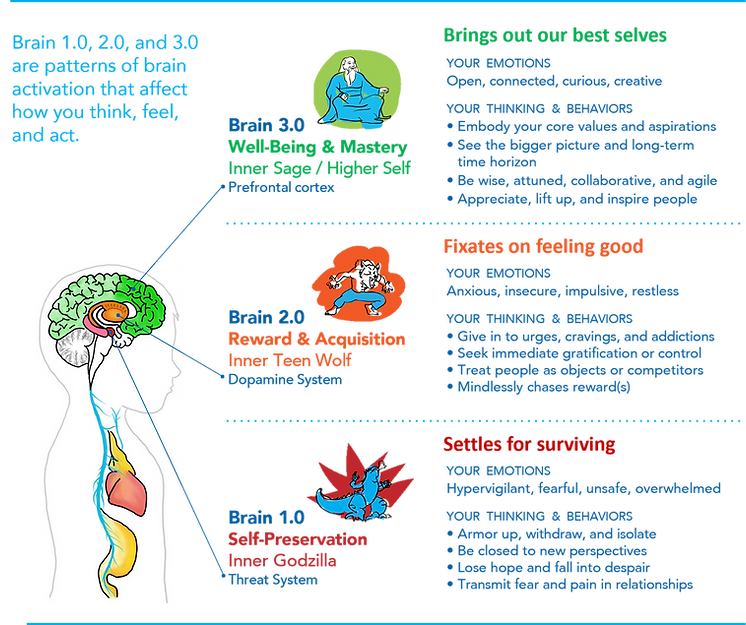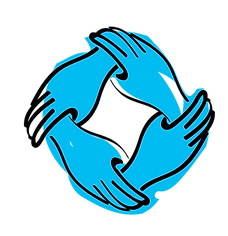Community Healing & Peace Project
A neuroscience-based training for professionals who support communities impacted by marginalization and trauma to foster collective healing and peace
The need to heal trauma to reduce violence
The widespread increase in trauma from the pandemic, rising gun violence, and a lack of capacity to deliver much needed mental health services are having a devastating impact on low-income and vulnerable communities, which were already experiencing high rates of adverse childhood experiences before the pandemic.
Since the pandemic started, a surge in gun violence has been disproportionately impacting low-income communities of color.
-
According to the Centers for Disease Control and Prevention, the number of gun deaths in America hit an all-time high in 2020 at 45,222 lives lost, driven by a 35% spike in homicides between 2019 and 2020.
-
Black males between the ages of 15 and 34, a group that makes up only 2 percent of the population, accounted for 42 percent of firearm homicide victims in 2020.
-
Gun homicides of Black women jumped 51 percent between 2019 and 2020.
-
In addition, the number of nonfatal firearm injuries each year is estimated to exceed 100,000.
-
The economic, physical, and psychological impact of gun violence on victims, survivors, families, peers, communities, and frontline responders multiplies this impact many fold.
Gun violence is intricately intertwined with higher levels of community trauma. In Philadelphia, areas where a high percentage of the population reported having 4 or more adverse childhood experiences in 2013 are more likely to experience high rates of gun violence today. Untreated traumatic stress disorders are correlated with hypervigilance, sensitivity to emotional arousal, and difficulty de-escalating conflict.
The pain and suffering in these communities are exacerbated by the fact that the mental health resources available to these communities are extremely limited and are often not culturally sensitive. State and federal mental health systems, as well as schools and community organizations don’t have the capacity to serve the large population being affected.
-
There are only 30 psychologists per 100,000 people in the US.
-
Pennsylvania has only one school psychologist for every 1,078 students and the ratio in Philadelphia is likely in the range of 1:1,800, much lower than the 1:500 ratio recommended by the National Association of School Psychologists.
Most non-profits in in the youth development and violence prevention space are small community organizations that focus on providing out-of-school time activities to keep at-risk youth off the streets. Most organizations do not have the budget to hire mental health professionals or to track and integrate scientific research on the psychological and neurobiological impact of trauma and community violence into their programming model.
These community organizations play a critical role in supporting young people to develop leadership and life skills such as self-awareness, impulse control, emotional regulation and de-escalation, and conflict management.
Many large cities, such as Philadelphia, are experiencing a dramatic surge in gun violence. Fatal shootings in Philadelphia jumped 95% from 2016 to 2021 while total shootings climbed 76% from 2016.
Philadelphia Shooting Victims, 2016 - 2021

“Philadelphia Trauma Map”

Percentage of Population with Four or More Adverse Childhood Experiences by Zipcode, 2013
Severe developmental trauma is defined as experiencing 4 or more adverse childhood experiences (ACEs). ACEs include violence, bullying, discrimination, abuse, neglect, living in foster care, and living with someone who was incarcerated or experienced addiction or mental illness.

Philadelphia shooting victims by voting ward, 2021
Source: https://billypenn.com/2021/12/13/philadelphia-gun-violence-map-shooting-hot-spots-election-wards/
There is a very urgent need for a scalable effective training that can be deployed through schools and community-based organizations to rapidly build local capacity and skills to address and heal trauma in impacted communities.
Our Community Healing & Peace Project
We aim to fill this need by delivering training to community partners, such as schools, social services agencies, and community-based non-profit organizations, to counteract and heal the impact of violence, toxic stress, and trauma in their communities.
This unique science-based train-the-trainer program consists of two components:
-
"Healing Marginalization Using Neuroscience" - a practical, accessible, neuroscience-based professional development training for educators, social workers, and youth development staff to more effectively address the impact of marginalization and trauma on brain development.
-
"Lead in Alignment and Wholeness" - a transformational leadership and life skills program that guides people ages 12+ to more deliberately strenthen the key neural systems for executive functioning and emotional intelligence, enabling them to become aware of and heal the impact of trauma on their brains and bodies. People who experience this training develop the capacity to calm their triggers, de-escalate conflict, and create positive changes in their lives, in their families, and in their communities.
The Calm Clarity Neuroscience-based Approach
Our Community Healing and Peace Project involves training community partners to spread our "Lead in Alignment and Wholeness" Program (the Curriculum) to empower people ages 12+ to understand and rewire their brain so they can foster healing and peace in themselves, their families, and their communities.
In order to neutralize the stigma associated with mental health programs, we designed the Curriculum as a premier neuroscience-based leadership program that is embraced and valued by leaders and corporations. As a result, community partners readily appreciate how the Curriculum enhances their staff’s effectiveness and leadership skills as well as their well-being and mental health. Once trained, staff are highly motivated to share the Curriculum with students and other beneficiaries.
Through the Curriculum, participants become aware of how they experience and impact the world around them differently in three patterns of brain activation and then strengthen their capacity to make conscious choices and create positive impact in Brain 3.0.

Collaborator Testimonials
We train mission-aligned Community Partners to enhance their effectiveness in co-creating transformational outcomes in the communities they serve.

Joshua Klaris, Executive Director,
North 10 Philadelphia
“The curriculum addresses challenges that our young people face in their everyday lives as they live in chronically traumatic situations. We believe this training may also have a profound impact on our staff."

Cory Long, Founder & Executive Director,
Making a Change Group
"This is something that can benefit people in my personal and professional life. This program could be a game changer for the violence prevention work that we do and I’m excited to partner with Calm Clarity."
Let's work together
Do you or your organization want to collaborate to foster community healing and peace?
To explore opportunities to make a difference together, please fill out this form or email us at info@calmclarity.org.
